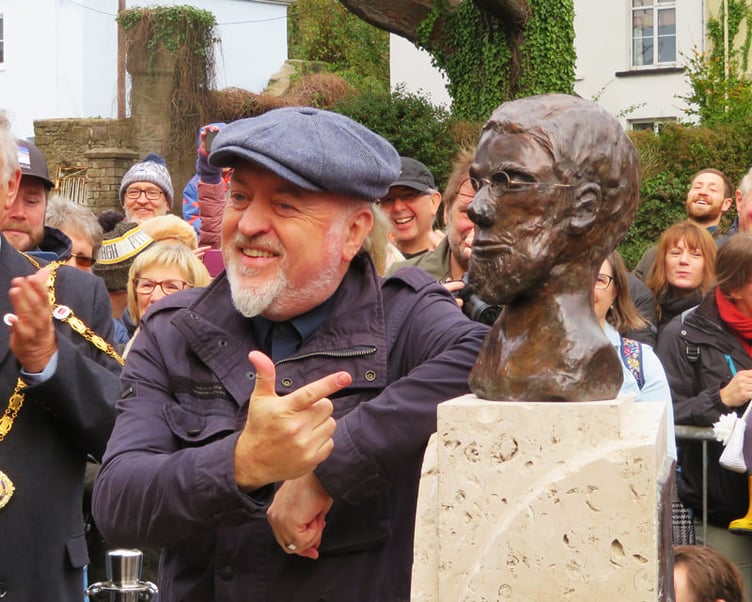AN arboretum planted by volunteers in tribute to a town’s most famous son will be officially opened this Saturday.
The Rotary Club of Usk has planted more than 130 trees in an area by the Athletic Club at the bottom of Maryport Street in time to commemorate next year’s 200th anniversary of the birth of naturalist and scientist Alfred Russel Wallace - joint originator with Charles Darwin of the Theory of Evolution.
Last year, comedian and Wallace fan Bill Bailey unveiled a bust of him in the town’s Twyn Square.
And this Saturday (September 24) at midday, Monmouth MP David Davies will officially open the Wallace Arboretum in honour of the naturalist, who was born in Kensington Cottage, Llanbadoc on January 8, 1823.
Last autumn some dead and damaged trees were removed by a consultant tree expert, and members of the Rotary Club then joined forces with the Usk Conservation and Environment Group to clear some unsightly undergrowth and make room for the planting of the new trees in March.
More planting will take place this autumn, while an information board and an area set aside to plant a tree to commemorate next year’s 200th Anniversary are also part of the scheme, which has been backed by Heritage Lottery and Welsh Government funding.
The site was once the town’s refuse site, and although trees were planted there in the 1990s by the Prison Service, it had become overgrown.
Usk Rotary Club’s Lottery bid, which was put together during lockdown, had the support of Usk Town Council and landowners The Roger Edwards Educational Trust.
Work is expected to be completed before the onset of Spring 2022.
Later, Rotary hope to encourage the public to sponsor a tree in memory of a lost loved one or to celebrate the arrival of a new family member.
Although famous in his own lifetime, Wallace’s role was largely forgotten until recently after his death at the age of 90 in 1913.
While Darwin came from a wealthy background, Wallace, was “an unlikely hero, from humble origins,” Bill Bailey told people last November at the bust unveiling.
A self-trained naturalist, he left his career as a building surveyor to travel to Borneo to pursue his passion and collect exotic exhibits.
Wallace soon spotted that orangoutangs had adapted long, muscular arms to swing from tree to tree to avoid the perils of the jungle floor.
And Bill told townspeople that his discovery of the Wallace Flying Frog, now named after him, “proved that evolution was ongoing”.
“Whilst it has muscular legs which can launch it into the air, and webbed feet which help it swim, it’s only in the infancy of gliding from tree to tree.
“Its flight is far from perfect - it flings itself from thing to thing.”
Wallace then wrote in 1856 about his findings to Darwin, much to the latter’s shock, as he thought he alone was on the brink of discovering evolution.
But the two combined for a joint paper presented at the Linnean Society in 1858 unveiling the theory of evolution, which sent shockwaves around the world, and spurred Darwin into writing “The Origin of Species”.





Comments
This article has no comments yet. Be the first to leave a comment.